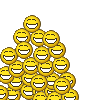Hi all,
Until the past week or so I have primarily been bowl lathering (I mainly use shaving soaps rather than creams, and accompanied by a synthetic brush), but the past 2 shaves I have tried to face lather.
My experience is that the lather I whip up in a bowl 'looks' better/more aesthetically pleasing on the eye, but when applied to the face doesn't seem as thick or protective as the face lather I have made? Not sure if that makes any sense, hence me asking on the forum.
It is hard to explain but regardless of how well I make a bowl lather, when I apply it to my face it doesn't go on as thick as when I make a face lather.
Any thoughts on this?
Many thanks
Until the past week or so I have primarily been bowl lathering (I mainly use shaving soaps rather than creams, and accompanied by a synthetic brush), but the past 2 shaves I have tried to face lather.
My experience is that the lather I whip up in a bowl 'looks' better/more aesthetically pleasing on the eye, but when applied to the face doesn't seem as thick or protective as the face lather I have made? Not sure if that makes any sense, hence me asking on the forum.
It is hard to explain but regardless of how well I make a bowl lather, when I apply it to my face it doesn't go on as thick as when I make a face lather.
Any thoughts on this?
Many thanks






